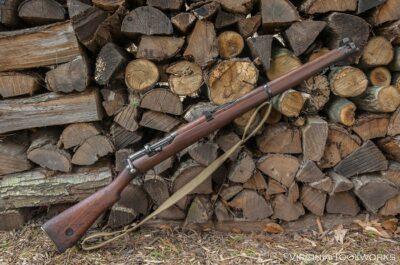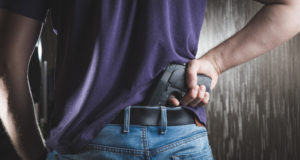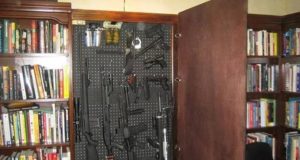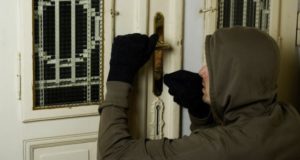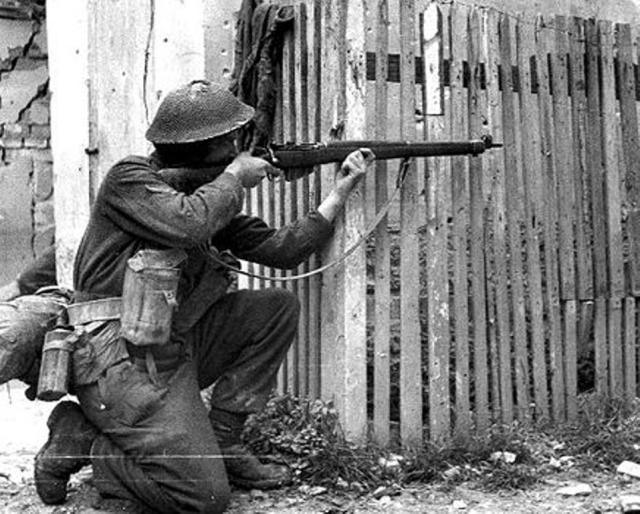 When you talk about famous firearms of the British Empire, a couple of examples will quickly ring a bell.
When you talk about famous firearms of the British Empire, a couple of examples will quickly ring a bell.
One is the respected Brown Bess and its variations, which saw the uniting of the crowns into the United Kingdom and the rise and expansion of the British Empire. Another would doubtlessly be the Enfield Rifled Musket, which saw action in the Crimean War and was used by both sides in the American Civil War. The Snider-Enfield and Martini-Henry Breechloaders followed, and were used throughout the colonial wars of the later 19th century.
But one modern rifle served the British Empire and its commonwealth through the two largest wars in history and is still available on the surplus market: the Lee-Enfield.
The .303 bore Lee-Enfield was adopted by the British Imperial Forces shortly before 1895. It saw use in the bloody Boer War, where teething issues were experienced, particularly when the rifle went toe to toe with the German Mauser rifles utilized by the Boers. Beginning toward the end of the Boer War, the British started a push to switch from the Enfield to a rifle that incorporated a Mauser action. During this time, a new variant of the Enfield, the “Short Magazine Lee-Enfield” or SMLE for short, entered service with the British Army in 1904, with a further change in 1907. This, consolidated with enhanced .303 cartridges, extraordinarily extended the rifle’s range, and increased its accuracy. With the start of World War I, the effort to replace the rifle with a Mauser-type firearm was ended.
During WWI, the Enfield beat almost every other rifle in the combat zone. With its 10-round magazine, and a one-of-a-kind cock on close action, the Enfield could be discharged by a trained infantryman at a rate of 30 rounds per minute. At the battle of Mons, the Germans reported coming up against machine gun fire, not knowing it was British Infantry discharging volleys during a “Mad Minute,” using the Lee-Enfield.
Vicious New Hand-Held Self-Defense Tool Turns Lethal In Seconds!
When the Canadians entered World War I, they were equipped with the accurate-yet-lethally defective Ross Rifle. After tragic results, the Canadian troops happily turned in their Ross Rifles for Enfields. The Enfield turned into the standard long arm of Canada for the following three decades.
It was later said that the French had the awful rifle (Berther and Lebel), the Germans had the best Hunting Rifle (Mauser G98), the Americans had the finest target rifle (Springfield M1903), and the British had the best military rifle (SMLE).
At the finish of the First World War, the SMLE became the No.1 Mk. III rifle, and the push to modernize the rifle further was started by the Brits. Toward the start of the Second World War, the SMLE equipped the majority of the British Empire, and also Australia, Canada and New Zealand. It was joined and in many ways supplanted by the No. 4 Mk. I rifle, which was a modernized Enfield. The new rifle was intended for large-scale manufacturing and was much less expensive and simpler to build en masse than the SMLE. The No. 4 Mk. I was equipped with a spike bayonet reminiscent of Napoleonic days rather than the sword bayonet utilized by the SMLE, but it kept the dependable Enfield action and 10-round magazine of the prior No 1 Mk. III. The Mk. IV saw wide usage in World War II and Korea, as did the SMLE. In World War II, the SMLE was the most widely used British rifle in the Mediterranean and Indian theater of the war, while the Mk. IV was for the most part utilized in Europe.
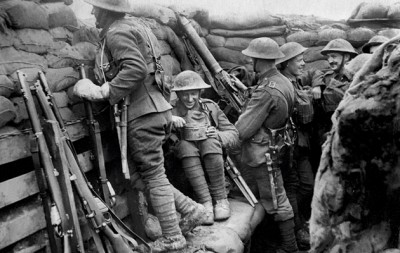 During the 1950s, the Enfield was supplanted by the L1A1 in both British and Commonwealth service and many surplus rifles flooded the surplus firearms market in the USA and Canada. The Enfield still sees military use with the Canadian Rangers, who are finally in the midst of replacing their aged rifles with modern .308s
During the 1950s, the Enfield was supplanted by the L1A1 in both British and Commonwealth service and many surplus rifles flooded the surplus firearms market in the USA and Canada. The Enfield still sees military use with the Canadian Rangers, who are finally in the midst of replacing their aged rifles with modern .308s
The .303 Enfield has been to the Canadians what the .30-06 M1 Garand and M1903 Springfield rifles are to the Americans. It is an excellent hunting rifle, and throughout North America has killed a huge number of deer, elk and moose, and bear.
I personally have enjoyed the Enfield as a range gun. The 10-round magazine is very unique for a bolt gun and provides more “plinking time.” While .303 isn’t sold everywhere, you can find surplus rounds online. The rifle is accurate (not as accurate as an M1903, but more accurate than an AR-15). I have seen it used for deer, and can attest to the lethality of a soft-tipped .303. The occasion it took a large whitetail in my presence, it was a one-shot kill that dropped the deer in its tracks.
An Enfield can be employed in a home defense role, but be careful if you choose milsurp rounds as they will easily puncture walls, bricks, chimneys, etc. Most mil spec rounds on the market are armor-piercing, not unlike much of the .30-06 surplus from the 40s and 50s M1 Garand owners use. Hunting rounds are a better option for home defense for the Enfield. Its fast bolt action will come in handy here.
An Enfield can be a good all-around multi-purpose rifle for hunting, self-defense and scavenging.
Have you use an Enfield? What advice would you add? Share it in the section below:
There’s A Trick To Navigating Federal And State Gun Regulations. Read More Here.
 Off The Grid News Better Ideas For Off The Grid Living
Off The Grid News Better Ideas For Off The Grid Living

